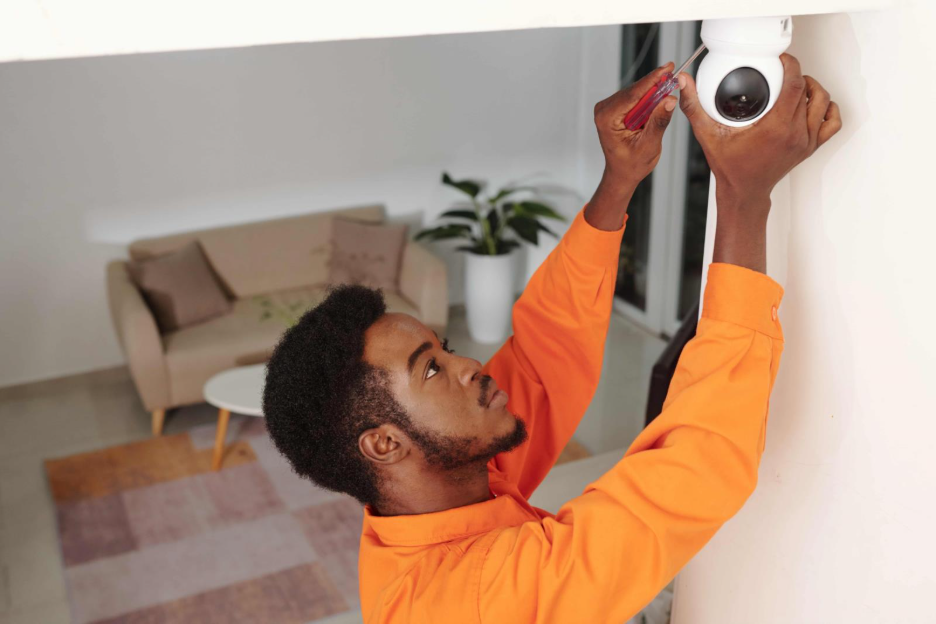
Home security is no longer limited to a simple alarm. Today, effective protection often starts with a camera—several, in fact. For homeowners comparing indoor versus outdoor camera placement, it is not just a matter of preference. It is a decision that directly affects how well your home security systems in St. Louis will perform.
This guide breaks down the roles, advantages, and ideal placement strategies for both types of cameras, helping you make smart decisions that strengthen your overall security.
Why Placement Matters
A poorly positioned camera can miss important activities, waste storage space, and give you a false sense of security. Correct placement, on the other hand, can deter intruders, capture critical footage, and provide peace of mind whether you are home or away.
A reliable system combines indoor and outdoor cameras. Each has a specific function, and the right placement allows them to work together as a complete defense strategy.
Outdoor Camera Placement
Outdoor cameras are your first line of protection. Their main function is deterrence. The visible presence of security cameras is often enough to stop a potential intruder from approaching the property.
Key areas to cover include:
- Front entrance: The most frequently used entry point for guests and intruders alike. Install a camera with a clear line of sight and minimal obstructions.
- Back and side doors: Criminals often target less visible entry points.
- Driveway and garage: Monitor vehicles, prevent theft, and record license plates.
- Ground-level windows or secluded areas: High-risk spots hidden from street view.
Outdoor cameras should be mounted high enough to prevent tampering, but low enough to capture usable video. A height of eight to ten feet is generally ideal.
Indoor Camera Placement
Indoor cameras are not about stopping break-ins. They help you monitor what is happening inside your home, whether it’s kids, pets, caregivers, or unexpected activity.
Ideal locations include:
- Main entryway or central hallway: Records who comes in and where they go.
- Living room or common areas: High-traffic zones that reveal most activity.
- Rooms with valuables: Cameras near safes, electronics, or collectibles.
- Nurseries or pet zones: For extra peace of mind when away.
The Case for Using Both
Many home security companies recommend a mix of indoor and outdoor cameras. This ensures comprehensive coverage and layered protection.
Outdoor cameras help:
- Deter criminal activity before it starts
- Monitor packages, vehicles, and exterior areas
- Alert you to motion on the property
Indoor cameras help:
- Record activity if someone gets inside
- Monitor daily activity of children or pets
- Provide valuable evidence in case of a break-in
Relying on one without the other leaves gaps. A full system protects both the perimeter and the interior of your home.
Technical Considerations
Proper camera placement is only part of the solution. You also need to consider equipment features:
- Wi-Fi connectivity: Ensure strong signal to avoid missing footage.
- Lighting: Choose infrared or spotlight cameras for night vision.
- Power supply: Decide between wired or battery-powered setups.
- Durability: Outdoor cameras must be weather-resistant for St. Louis seasons.
A professional installer can test signal strength, adjust angles, and mount cameras safely, improving performance.
Cloud vs. Local Storage
Cloud storage offers remote access, alerts, and secure off-site backup. Local storage is often cheaper long-term but less secure if not protected properly. Many systems now offer both options for flexibility.
Final Thoughts
Security cameras aren’t just gadgets—they’re your eyes when you’re not home. Placed correctly, they offer peace of mind and real protection. Start with the right spots, then layer your indoor and outdoor coverage. That’s how smart home security systems in St. Louis are built.
Need Help Choosing and Installing Your System?
ACF Alarm has been helping St. Louis homeowners protect what matters for decades. From planning to professional installation, we’ve got you covered.
Call us today and let’s get your cameras working smarter—not harder.